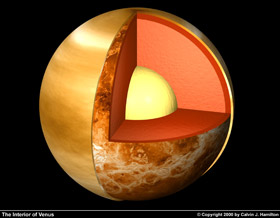
Figure 1 - Copyright Calvin J. Hamilton (http://www.solarviews.com/cap/venus/venusint.htm). Planetary magnetic fields are generated by a flow of charged particles often in the deep viscous outer core of the planet.
Venus formed at the same time as Earth, in the same general region of the solar system, and is very similar in both size (R(Venus) = 6052km vs R(Earth) = 6378 km) and density (Venus = 5.52 vs Earth = 5.24 g/cm3). Because of this grose similarity in size and density, scientists think that Venus has an internal structure quite similar to Earth's. This similarity shows up in the mathematical models for Venus that are derived from gravity and magnetic field data from the Venera, Pioneer Venus and Magellan spacecraft. Venus probably formed a differentiated core much as Earth did, with the heaviest elements such as iron sinking to the middle of the planet.
It is not known if this core has yet solidified as much of the Earth's core has. Because of its slow rotation (243 days) and its predicted lack of internal thermal convection, any liquid metallic portion of its core could not be rotating or convecting fast enough to generate a measurable planetary magnetic field. Limits on magnetic field strength from the Magellan magnetometer data shows that the Venus magnetic field is a miniscule 0.000015 times Earth's field. But this may not always have been the case. Current theories of the formation and evolution of the terrestrial planets do support a much more intense, ancient magnetic field on Venus which may have been at least as strong as Earth's a few billion years after Venus was formed. During that time, left-over heat energy from the formation of the planet was probably high enough to drive circulating currents and convection leading to a strong 'dynamo' magnetic field. After this heat was fully dissipated by leaking out through the planets surface, the currents ceased to flow vigorously and the magnetic field decayed to its present level. Without a magnetic field, how does Venus interact with the Sun and its solar wind?
Spacecraft observations do show that Venus is not completely inert as a magnetic body. As the solar wind collides with the upper atmosphere, it causes electrical currents to flow in the Venusian ionosphere. These flowing currents generate their own weak magnetism, which spacecraft can detect as a comet-like magnetic 'wake' trailing behind the planet opposite the Sun. Though no Earth-like magnetotail or trapped radiation belts have been detected, the Venusian magnetic field has some similarity to a traditional dynamo-generated planetary field. For example:
It is possible that Venus' core would solidify some time in the future as it releases the last remnants of its internal heat. As this happens, a weak temperature difference between the core and surface might be enough to regenerate a global magnetic field similar in form to the Earth's, but at much lower intensity.